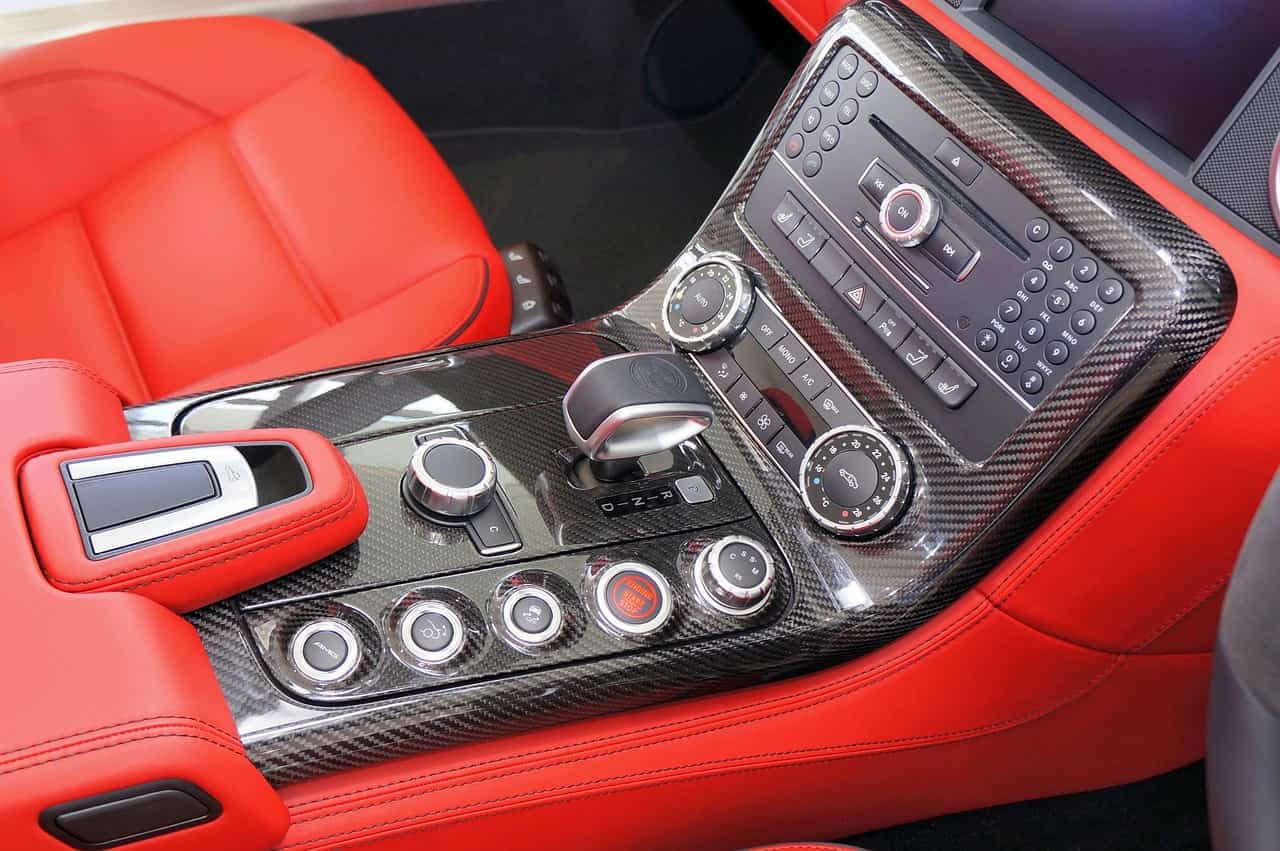Introduction to Race Car Switch Panels
Revving engines, screeching tires, and the thrill of adrenaline rushing through your veins. Welcome to the captivating world of race car driving! But behind every mighty roar lies a sophisticated control system that keeps these high-performance machines in check.
The humble yet indispensable race car switch panel is at the heart of this intricate web of controls.
In this blog post, we’ll dive into the fascinating functionality of race car switch panels and explore why they are an absolute must-have for any serious racing enthusiast. We’ll cover everything from understanding different types and critical components to installation tips and customization options.
Types of Switch Panels and Their Functions
Various types of race car switch panels are available on the market today. Each type serves a specific function and caters to different needs of racers. Let’s take a closer look at some popular types of switch panels and what they can do.
1. Toggle Switch Panels: These panels feature individual toggle switches that control various functions like lights, ignition, fuel pump, and more. They are simple yet effective in providing quick access to essential controls during races.
2. Push Button Switch Panels: As the name suggests, these panels use push buttons instead of toggles. They offer a sleeker design and can be easily customized with different colours or labels for each button.
3. Touchscreen Switch Panels: The advent of technology has introduced touchscreen switch panels that provide a modern and futuristic feel to race cars. These high-tech panels allow racers to toggle between multiple functions with a swipe or tap on the screen.
4. Rotary Switch Panels: Ideal for controlling multiple systems simultaneously, rotary switch panels utilize rotating knobs that can be turned clockwise or counterclockwise to adjust settings or activate/deactivate certain features.
5. Wireless Remote Control Switch Panels: For ultimate convenience, wireless remote control switch panels enable racers to operate their vehicle’s functions from a distance using handheld remotes or smartphone apps.
No matter which type you choose, switch panels play an integral role in race cars by offering easy access and control over vital components during intense races where split-second decisions matter the most.
Critical Components of a Switch Panel
A race car switch panel may appear to be a simple control interface. Still, several vital components work together to unleash a race car’s full power and functionality. Let’s examine these crucial elements in more detail.
1. Toggle Switches: These are the primary switches on the panel, allowing drivers to turn various systems on or off with just a flick. Each toggle switch is labelled for easy identification and control during high-speed races.
2. Push Buttons: Alongside toggle switches, push buttons provide momentary activation of specific functions, such as starting the engine or activating nitrous oxide boosters. They offer quick and precise control when split-second decisions matter most.
3. Indicator Lights: Designed to give drivers instant visual feedback, indicator lights illuminate when specific systems are activated or indicate potential issues that require attention.
4. Circuit Breakers: To safeguard against electrical overloads and ensure system reliability, circuit breakers automatically interrupt power flow in case of excessive current draw or short circuits.
5. Wiring Harnesses: Connecting all the components is an intricate network of wiring harnesses tailored specifically for each race car’s configuration. Properly organized wiring ensures efficient transmission of signals between switches and their intended functions.
Why Switch Panels are Essential for Race Cars
Switch panels are not just an accessory for race cars; they are an essential component that can significantly enhance the functionality and performance of the vehicle. These compact control centres allow drivers to easily manage various electrical systems with just a flick of a switch.
One of the main reasons why switch panels are crucial in race cars is because they provide convenience and efficiency. Instead of fumbling around with multiple switches scattered throughout the cockpit, racers can have all their controls neatly organized in one central location. This makes it easier for them to adjust quickly during high-speed races without taking their eyes off the track.
Furthermore, switch panels help eliminate clutter and reduce wiring complexity within the car’s interior. By consolidating all electrical controls into a single board, racers can achieve a cleaner and more streamlined look inside their vehicle. This enhances aesthetics and improves safety by minimizing potential hazards caused by loose wires or tangled cables.
In addition to convenience and safety benefits, switch panels also offer customization options tailored to individual preferences. Racers can choose switches that suit their needs, such as toggle or push-button. They can also label each button according to its corresponding function for easy identification during intense racing scenarios.
Moreover, modern switch panels often have advanced features like backlighting or LED indicators that enhance visibility in low-light conditions. These features ensure drivers can quickly locate and operate switches even under challenging circumstances on the track.
Race car switch panels are vital in optimizing performance and providing seamless control over critical functions while driving at high speeds.
Installation and Customization Options
Installation and customization options for race car switch panels are crucial in maximizing the functionality of these essential components. The installation process may vary depending on the specific model and type of switch panel being used but generally involves mounting the panel securely within reach of the driver.
Customization options allow racers to tailor their switch panels to meet their needs and preferences. This can include choosing the number and placement of switches and selecting additional features such as LED indicators or toggle guards for added safety.
When installing a switch panel, it is essential to follow manufacturer instructions carefully to ensure proper wiring and connection. It is also recommended to consult with an experienced mechanic or electrician if you need to become more familiar with electrical systems.
Regarding customization, many switch panels offer interchangeable labels that can be easily changed based on different racing scenarios or vehicle configurations. Some manufacturers even provide custom engraving services for a more personalized touch.
Furthermore, some advanced button panels feature programmable functions, allowing drivers to create customized profiles tailored to their driving style or track conditions. This level of customization ensures optimal performance on every race day.
By taking advantage of installation and customization options available for race car button panels, racers can enhance control over various aspects of their vehicles while maintaining convenience and ease of use during high-pressure racing situations.
Tips for Choosing the Right Switch Panel for Your Race Car
When it comes to choosing a switch panel for your race car, there are several factors that you need to consider.
1. Functionality: The first thing to consider is what functions you need your switch panel to perform. Do you require multiple switches for different accessories? Or do you only need an introductory meeting with a few buttons? Understanding your specific requirements will guide you in selecting the most suitable option.
2. Quality and Durability: Race cars experience intense vibrations and extreme conditions on the track, so choosing a button panel that can withstand these challenges is crucial. Look for panels made from high-quality materials, such as aluminium or carbon fibre, which offer strength and durability.
3. Wiring Compatibility: Ensure the button panel is compatible with your car’s wiring system. Integrating into your existing setup should be accessible without extensive modifications or rewiring.
4. Ease of Use: A user-friendly button panel is essential during high-pressure racing situations where split-second decisions matter. Opt for panels with clearly labelled buttons and intuitive designs that allow quick and effortless operation.
5. Customization Options: Some button panels offer customization options, allowing you to choose the layout of buttons according to your preferences and needs. Consider whether this flexibility would be beneficial in optimizing functionality within your race car cockpit.
6. Maintenance Requirements: Find any maintenance or upkeep needed for the button panel, such as cleaning instructions or regular inspections of connections and wiring harnesses.
Common Mistakes to Avoid When Using a Switch Panel
When using a switch panel in your race car, some common mistakes can easily be avoided with proper knowledge and attention.
1. Poor planning: One of the biggest mistakes is not properly planning the layout of your button panel before installation. Take the time to consider carefully which buttons you will need and where they should be placed for easy access while driving.
2. Overloading circuits: Another mistake is overloading circuits by connecting too many electrical components to a single button or circuit breaker. This can lead to blown fuses or even fires, so make sure you understand the power requirements of each piece before connecting them.
3. Neglecting safety precautions: Safety should always be a top priority when using a button panel. Use appropriate wiring and connectors, secure all connections properly, and regularly inspect for any signs of wear or damage.
4. Lack of labelling: Failing to label your buttons can lead to confusion during high-pressure situations on the track. Mark each control with its corresponding function for quick identification and ease of use.
5. Ignoring maintenance: Regularly check your button panel for any loose connections or signs of corrosion. Clean terminals as needed and replace any damaged buttons promptly.
By avoiding these common mistakes, you’ll ensure that your race car’s button panel functions optimally and enhances both performance and safety on the track.
Maintenance and Care for Optimal Performance
1. Cleanliness is key: Dirt, dust, and debris can hinder the performance of your button panel. Regularly clean it using a soft cloth or compressed air to remove any built-up particles.
2. Check for loose connections: Over time, vibrations from racing can loosen electrical contacts on the button panel. Periodically inspect all wiring and secure any open connections to prevent malfunctions during a race.
3. Avoid moisture damage: Moisture can cause corrosion and short circuits in your button panel. Take precautions by sealing connectors with dielectric grease or using waterproof covers when necessary.
4. Test functionality regularly: It’s essential to test each button on the panel periodically to ensure they are working correctly. This will help identify any issues early on and allow you to address them before they become significant problems.
5. Follow manufacturer guidelines: Refer to the manufacturer’s instructions for specific maintenance recommendations for your particular button panel model.
By properly caring for your race car button panel, you can extend its lifespan and maintain optimal performance throughout every race season.
Advancements in Switch Panel Technology
Switch panel technology has come a long way in recent years, with innovative features and improvements that have revolutionized the functionality of race car button panels. One notable advancement is the integration of touchscreen displays, which provide a user-friendly interface for controlling various functions within the vehicle.
These advanced button panels offer enhanced customization options, allowing users to create personalized layouts and assign specific functions to each button or button. This level of flexibility enables drivers to easily access and control critical systems such as ignition, fuel pumps, lights, and more at their fingertips.
Furthermore, modern button panels are designed to be compact and lightweight without compromising durability. They are constructed with high-quality materials that withstand demanding racing conditions while ensuring reliable performance.
Another significant development is the incorporation of wireless connectivity into button panel technology. This allows seamless communication between the race car’s panel and other devices or systems. For instance, sensor telemetry data can be transmitted wirelessly to the button panel’s display for real-time monitoring.
Additionally, advancements in power management technology have improved overall efficiency and safety. Some button panels now feature intelligent circuitry that automatically shuts off power to specific components when not in use or if an electrical fault is detected.
Furthermore, these panels often include built-in diagnostics capabilities that alert drivers to potential issues or malfunctions before they become major problems during a race.
As technology evolves rapidly, we can expect even more exciting advancements in race car button panel functionality.
Conclusion
The functionality and importance of a race car switch panel must be balanced. This crucial component gives drivers complete control over various vehicle functions, ensuring optimal performance on the track.
Throughout this article, we have explored the different types of switch panels available and their specific functions. We’ve also discussed vital components of a switch panel, such as toggle switches, push buttons, and indicator lights.
Understanding why switch panels are essential for race cars is vital. These panels provide a centralized location for all necessary controls, allowing drivers to quickly and easily adjust without taking their eyes off the road.
Installation and customization options were also covered in detail. Choosing a switch panel that suits your needs and preferences is vital while considering size, layout, and wiring requirements.
In addition to installation tips, we guided you in selecting the right switch panel for your race car. Factors such as durability, ease of use, and compatibility with existing systems should be considered when making this decision.
We also highlighted common mistakes to avoid when using a switch panel. These include improper wiring or installation techniques that can lead to malfunctioning or even dangerous situations on the track.
Ensuring optimal performance from your switch panel system in every race event requires regular maintenance and care. Cleaning connections regularly can prevent issues caused by dirt or corrosion buildup.
FAQS
1. What is a race car switch panel?
A race car switch panel is a control centre that houses various switches and buttons to operate different functions in a race car. It allows the driver to easily access and control essential features such as ignition, lights, fuel pumps, fans, etc.
2. How many types of switch panels are there?
There are two main types of switch panels commonly used in race cars: toggle switch panels and push-button switch panels. Toggle switch panels have physical switches that can be flipped up or down to activate or deactivate functions. Push-button switch panels feature buttons that need to be pressed for operation.
3. Why are switch panels essential for race cars?
Switch panels are crucial for race cars because they provide quick and convenient access to critical functions during high-speed races. They allow drivers to focus on the track while efficiently controlling critical operations without any distractions.
4. Can I install and customize my switch panel?
Yes! Many manufacturers offer easy-to-install kits with all the necessary components and detailed instructions. Additionally, customization options such as labelling switches or choosing specific button configurations allow you to tailor the panel according to your needs.
5. What should I consider when choosing a switch panel for my race car?
Factors like ease of use, durability, number of switches/buttons required, wiring compatibility with your vehicle’s electrical system, and available mounting space should be considered when selecting a switch panel.










